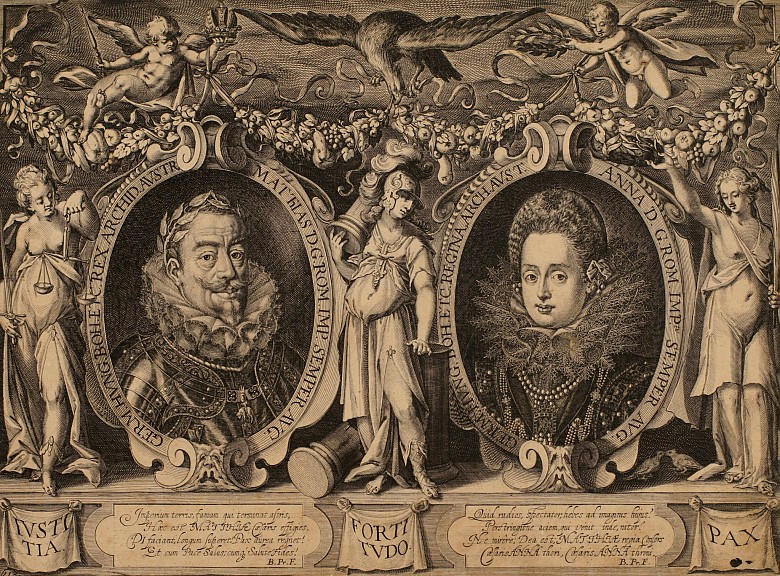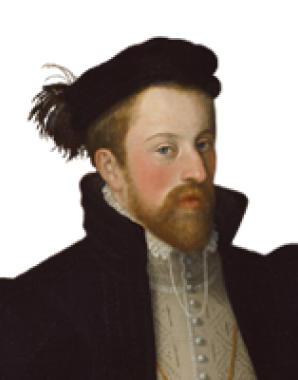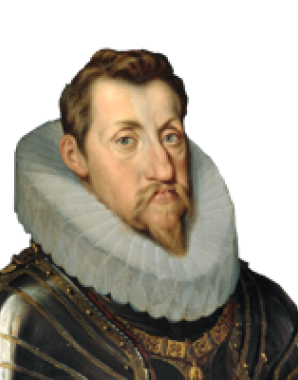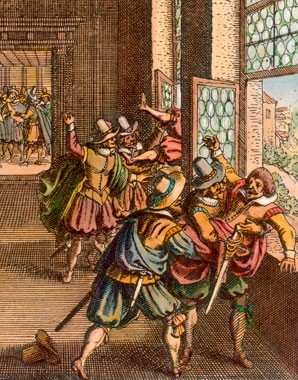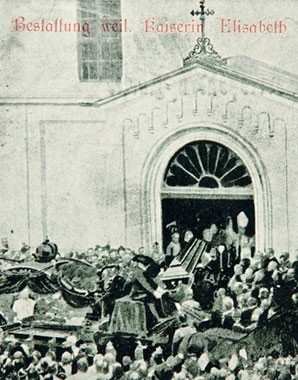Matthias: rise and fall
As Rudolf’s next-eldest brother and the highest-ranking archduke, Matthias was recognized as head of the dynasty by his brothers Ernst and Albrecht as well as by Archduke Ferdinand from the Styrian line. The candidate of the intra-familial opposition to Rudolf, as his successor on the imperial throne Matthias was however little more than a tool in the hands of his advisors.
The next phase in the conflict between the two brothers commenced: in the open revolt against Rudolf in 1608 Matthias headed a confederation of the Estates of Hungary, Moravia, and Lower and Upper Austria. This might have led to Rudolf’s deposition had not the Bohemian Estates remained loyal to him contrary to expectations. The Treaty of Lieben in 1608 brought about a compromise: Emperor Rudolf retained his imperial title, the kingdom of Bohemia, the duchy of Silesia and the two margraviates of Upper and Lower Lusatia, while Moravia, Hungary, Lower and Upper Austria were ceded to Matthias. However, the real winners were the Estates, as Matthias had had to buy their support by conceding freedom of religion for the nobility in the Austrian lands. Moreover, the opposition Estates had created a platform in the shape of the Horner Bund (League of Horn) to articulate their demands. In Hungary and Moravia religious pluralism had in any case long been constitutionally guaranteed.
When Rudolf fatally compromised himself in Bohemia with a disastrous attempt to gain the upper hand using an army of mercenaries known as the Passauer Kriegsvolk, Matthias was poised to achieve the goal of his desires. Emperor Rudolf could only look on helplessly, degraded to the role of mere spectator as his brother was elected king of Bohemia in May 1611. When Rudolf died shortly afterwards in January 1612, Matthias finally succeeded his brother as emperor of the Holy Roman Empire.
Matthias was a passive ruler who left politics entirely in the hands of his advisor, Klesl. The latter attempted to play off his adversaries against one another by entering into temporary and changing alliances with the religious parties on both sides of the dispute. The concessions made for the sake of these alliances were a thorn in the side of the hardliners in the Habsburg family, Spain and the Inner Austrian line as well as the Catholic party in the Empire.
The question of the succession arose again, as his marriage to his cousin Archduchess Anna (1585–1618), daughter of Archduke Ferdinand of Tyrol, celebrated in 1611, remained childless.
In 1617 Archduke Ferdinand of Inner Austria was officially named as his successor with Spain’s blessing. Matthias was not involved in this decision, a circumstance that demonstrates his increasing loss of power. Ferdinand was then also elected king in Bohemia in 1617 and in Hungary in 1618. The rise of this uncompromising representative of the Counter Reformation was a declaration of war on the non-Catholic Estates of the Habsburg Monarchy. The Prague Defenestration of May 1618 was the trigger for a conflict that escalated into war on a hitherto unknown scale.
Here again, Matthias was uninvolved in this dangerous aggravation of the situation: Cardinal Klesl was overthrown by Ferdinand and placed under arrest. Matthias, who in the meantime had been politically neutralized, could only look on helplessly as his political mastermind was deprived of power. Plagued by gout, Matthias died a year later on 20 March 1619 in Vienna, to where he had moved the court from Prague on assuming the regency.
Emperor Matthias was interred in the Imperial Crypt in the Church of the Capuchin Friars in Vienna, which he had endowed together with his wife Anna.
